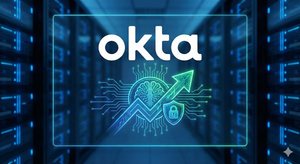Top 3 Business Development Companies for Double-Digit Dividends

Publicly traded business development companies (BDCs) are growing in popularity for their astounding dividend income. Like real estate investment trusts (REITs), BDCs must distribute 90% of their taxable income to shareholders as dividends.
BDCs typically invest in small, private companies either by lending them money or buying stock. These companies may be too small to access the public bond market, and banks may not be willing to lend to them because they view them as too risky. Thus, BDC financing provides a much-needed source of capital to help these small companies grow.
Much of what BDCs do falls into the asset class of private debt or private credit. Investing in this asset class has typically been reserved for private funds, where one must have a very high income or net worth to participate. However, investing in a BDC allows anyone to get indirect exposure to private credit. The potential benefits include diversification and high dividend income.
The loans BDCs provide to small companies will tend to have higher interest rates because the companies are riskier. This supports the higher dividend yields but also means the companies are more likely to default on their loans, which could impact the returns of the BDC. Below, I’ll detail three BDCs that can provide massive income levels compared to even the highest-paying dividend stocks.
A Nearly Double-Digit Dividend Yield With 95% First Lien Loans
First up is the Morgan Stanley Direct Lending Fund (NYSE: MSDL). The dividend yield of this fund almost touches double digits, coming in at 9.9%. Looking into the portfolio of this fund provides an example of what a BDC invests in. As of this last earnings release, the fund attributed 95% of its assets to “first-lien debt." Second-lien debt made up just 3% of the fund, while equity investments made up less than 2%.
"First lien" means that this debt takes the highest priority for the borrower. If the borrower goes bankrupt, they must attempt to fully repay this debt before paying other lenders or equity holders. This makes the first lien debt less risky than the second lien debt of the same company. Morgan Stanley points out some other key aspects of the fund, including its investment in “94% non-cyclical sectors.” This means the fund greatly limits lending to companies that are very dependent on the economy being good to succeed. Since 2021, the fund has maintained a dividend yield above 9% every quarter.
A BDC From the World's Largest Alternative Asset Manager
Next is the Blackstone Secured Lending Fund (NYSE: BXSL). Blackstone (NYSE: BX) is the largest alternative asset manager in the world, with over $1 trillion in assets under management. It also has the world's largest commercial real estate portfolio. Its BDC currently boasts a forecasted dividend yield of 10.4% for the next 12 months. Again, it invests almost exclusively in first-lien debt, which makes up 98.6% of the portfolio.
The average revenue of each portfolio company, $773 million, provides a better idea of their size. Blackstone claims its fund has the second lowest fees of its public BDC peers. However, BDC fees are not paid by the shareholders. The company pays fees to one of its subsidiaries to manage the fund. This means that these fees are just expenses of the fund. However, lower expenses increase profitability, which can lead to potentially higher dividends.
Yes, BDC Dividend Yields Can Be Even Higher
Last up is FS KKR Capital (NYSE: FSK). KKR (NYSE: KKR), another powerhouse in the private investment world, manages the fund. The next 12 months' forecasted dividend yield for this fund sits at a whopping 13.7%, down slightly from the 15% it achieved over the past 12 months.
One reason this company is able to provide a higher yield than the other two funds may be due to the higher risk of its portfolio. For example, this fund directly invests only 58% of its assets in first-lien debt. Second-lien debt makes up nearly 7% of the portfolio, and preferred equity makes up 6%. It allocates around 14% of the fund to “asset-based finance," which involves using assets to secure a loan. This could lead to higher interest rates to compensate for the potential depreciation of those assets.
More News
View More




Recent Quotes
View More
Quotes delayed at least 20 minutes.
By accessing this page, you agree to the Privacy Policy and Terms Of Service.